A few days ago much of northern England was shivering in temperatures of minus 6 or more. That didn’t stop the preserved railways running services, even though some began their operations late because of the need to unfreeze equipment or water supplies. The countryside was resplendent in glorious white scenery however and that was also true for the area where the Bridgewater canal breach occurred.
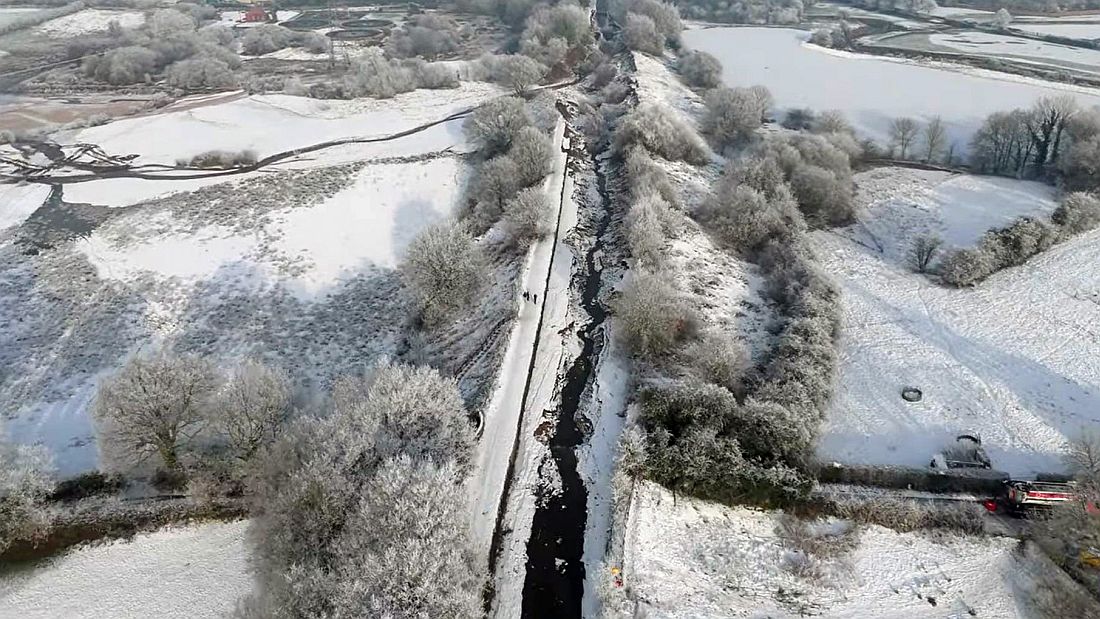
Brrr! But beautiful though. As they say, beauty is in the eye of the beholder, and beauty could never in a million years, distract from the quite considerable destruction the Bridgewater canal breach has caused. North East Lincs Drones did some great shots despite it being -6c in their recent Youtube video.
The canal is now being refilled slowly on both sides – it looks like they are doing the refill simultaneously thus fairly soon Bridgewater canal/Peel will be moving the boats at the same time either side of the breach – possibly end of January or beginning of February.
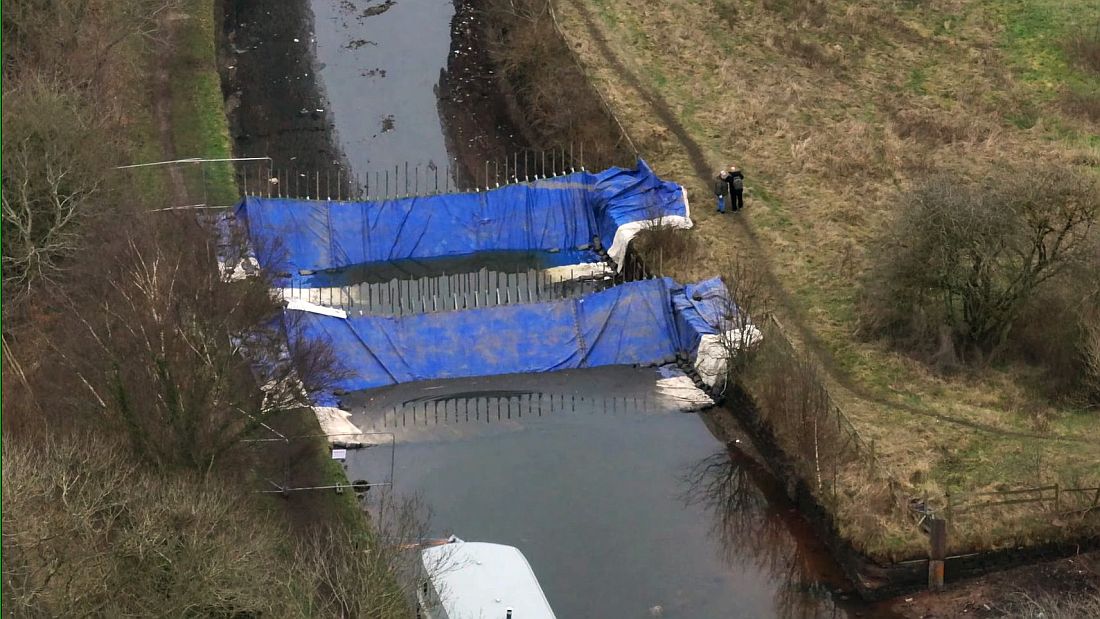
The Park Lane aqueduct and the Little Bollington cofferdam with the widebeam boat (ownership unknown) evident. Youtube.
Re the coffer dam on the west (Little Bollington) side – there’s no doubt the grey widebeam will be moved too even though no-one knows who owns it. Luckily the boat was no further than it is because its just past the winding hole and just before the problematic area begins (which is from the Park Lane aqueduct to Dunham Back Lane).
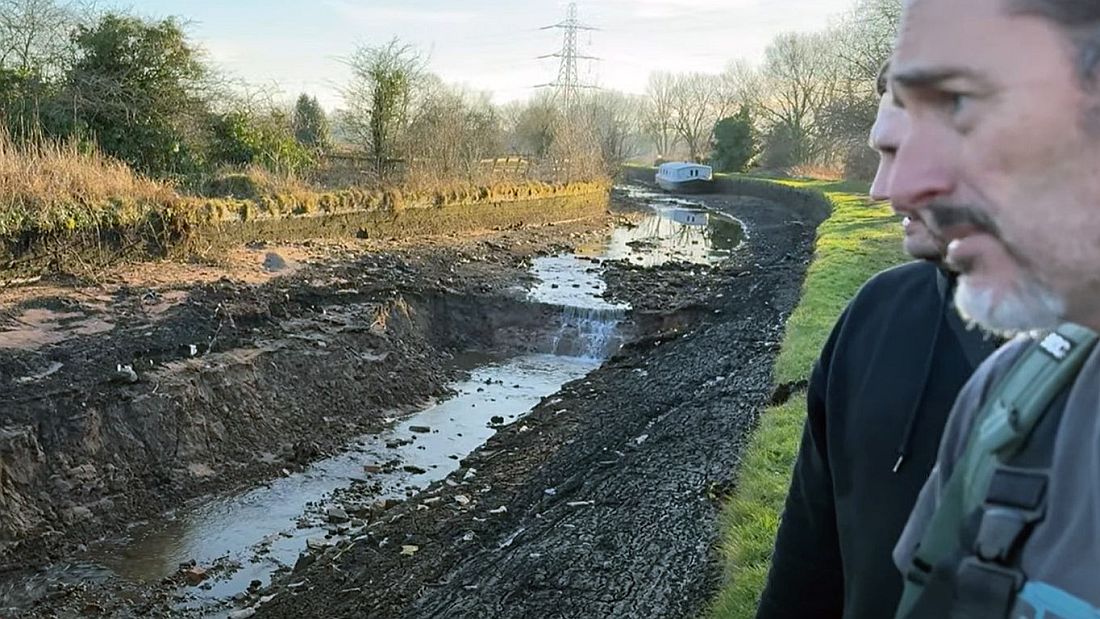
Chris Tate’s video is of interest because its an eye opener in how the uninitiated gets to see destruction like this. Interestingly at one point in the video the exposed arch of Park Lane aqueduct can very clearly be seen. Not how close the grey widebeam is to this – as I said earlier its quite fortunate the widebeam wasnt any further nearer to the breach because of where the cofferdams need to be located. Youtube.
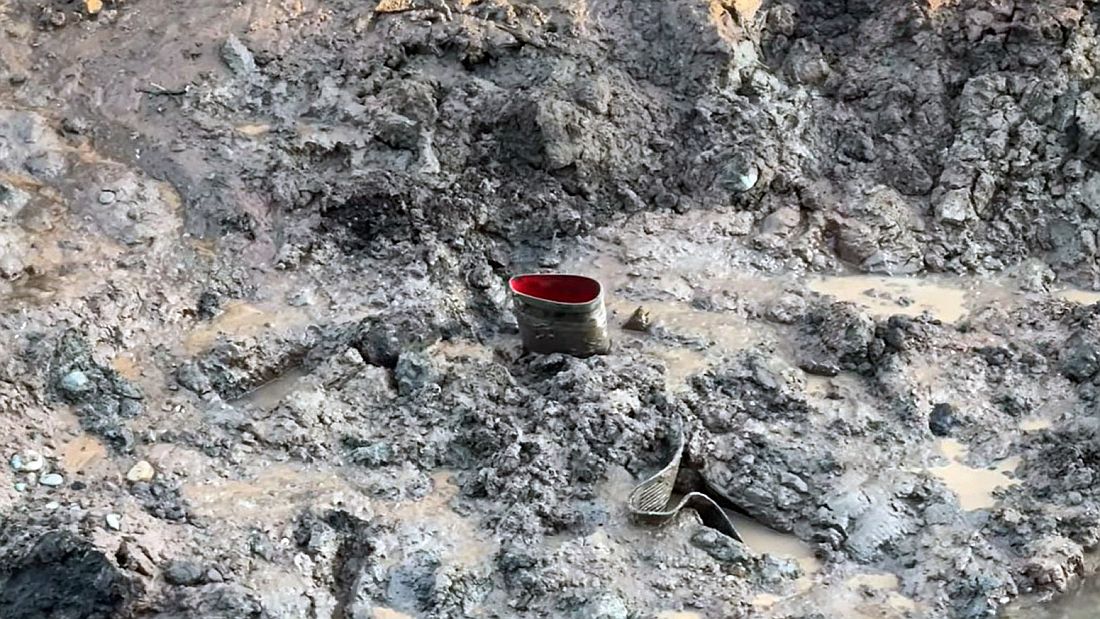
All’s well that ends welly! Evidently someone has tried walking right along the bottom of the breach section. As Chris Tate and his friend commented, the unknown person no doubt lost their wellington in the process! Youtube.
In another video that was filmed as a livestream, StreetHawk filmed a walk through the Park Lane aqueduct its evidently still blocked off however people can walk through simply by pushing the barricades to one side as the video clearly shows!
From about here on Youtube he takes a walk down into the breach section. This was a live recording done earlier today (18th January 2025). Its not the done thing because the barricades across the towpath are meant to stop people going there, but many simply walk around these or even move the barricades out of the way, so anything like this such as venturing down into ‘Ground Zero’ itself is entirely done at the person’s own risk. In the early days of the breach when the barriers were first placed across the towpath there were police at times stopping people venturing further but there’s none of that now.
Why was the Bolin embankment built with sand?
The interesting thing in the above videos is the embankment where the breach occurred seems to be composed mostly of sand – which is not a good thing! In the Chris Tate video that was also being pointed out because there was also some evident in the embankment on the western side of the breach and Chris Tate had commented on how much of the sand was now deposited in the Bolin valley further down. (see Chris’ video from about here.) It might have been that instead of using more suitable material at a greater cost, sand was substituted instead for this and other embankments and this scene from Youtube no doubt shows the embankment was largely composed of sand.
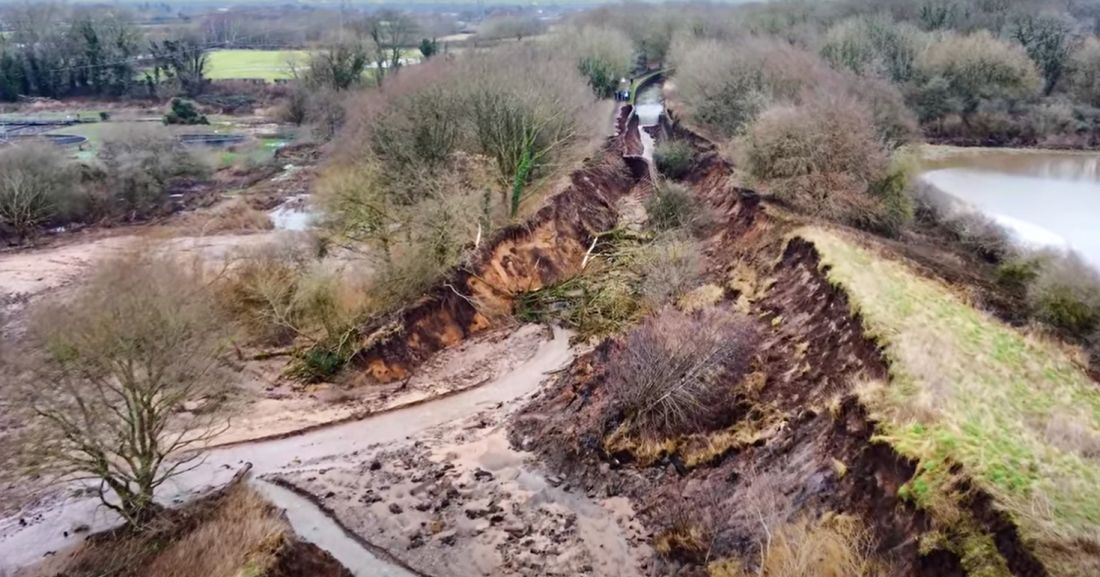
This Youtube scene clearly shows sand concentrated around where the breach occurred. Other parts of the embankment also constituted of sand too.
If one reads Samuel Smiles, its evident from this that some different construction methods were used for the Bridgewater canal. He discusses the fact the canal builders (the navvies essentially) or what Smiles calls skilled men “had their trade-secrets, in which the unskilled were duly initiated, simple matters in themselves, but not without their uses. The following may be taken as specimens of the secrets of embanking in those days…” Smiles then goes on to add: “Sand or gravel can be made water-tight by shaking it together with flat bars of iron run in some depth, say two feet, and washing down loam or soil as the bars are moved about, thus obviating the necessity for clay puddle.”
Evidently the sand was because of two factors – one it was quicker to make up as opposed to what Brindley preferred, which was puddling – and that can be quite a job sometimes. Two, it was no doubt cheaper. Smiles notes there was plenty of sand in the area some of it in the form of quicksand. The canal had some problems with quicksand at Dunham as Smiles noted. No doubt the large presence of sand (or sand gravel) was quite likely free at source and also much cheaper to transport being in the locality itself.
The Bridgewater canal embankments were built with sand – a ‘trade-secret’ of sorts no doubt!
From the above it can be seen that sand was indeed substituted instead of clay puddling. Knowing Brindley, he would have much preferred that puddling be used. However, Brindley was pretty much at the end of a very intensive life that had taken him all around the country surveying and engineering various canals and at the time was surveying the Chesterfield, the Droitwich and the Caldon canals. He was so much in demand that surveying and engineering supervision had to be allocated to Hugh Henshall, Robert Whitworth and others. He caught a chill in June 1772 at Ipstones whilst surveying the Caldon canal and he slept in his bed at the Old Red Lion in his damp clothes. As a result he became very ill and was “disabled from all further work.” (Samuel Smiles). Brindley died in September 1772 – the same year the Bridgwater canal’s extension was opened. Its likely Brindley barely oversaw construction of the Bridgewater canal’s western extension – and if he had been present at the Bolin embankment’s construction, he would have very likely have been concerned sand was being used as a material instead of puddling.
Self-actuating stop gates were originally built along the length of the canal
One other matter of interest is in there’s a page on precautions against bursting of the canal’s banks, Brindley originally had the canal furnished with stop gates at numerous locations no doubt because it was an extremely long canal without locks. The idea behind these was in any event a breach should occur the stop gates would rise and shut off the canal. Whether that worked in practice is not known. I’ve never seen any evidence of these self rising stop gates so perhaps they were unsuccessful and taken out of use quite early on – and stop planks/cranes substituted instead?
Main picture is a merge of two screencaps from NE Lincs Drone’s video of the breach site in minus 6c weather!
Update 19 January 2025:
Never seen before pictures of the 1971 Bridgewater Canal breach https://t.co/dz6fUT6HvY
— Warrington Guardian (@warringtonnews) January 19, 2025
